Mr. Sato tries monjayaki for the first time, goes all in with new “innovative” European flavors
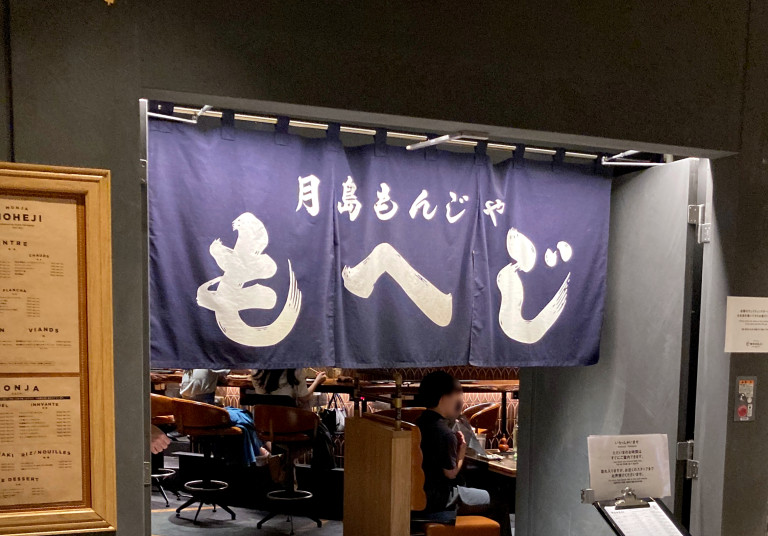
How do European flavors combine with a traditional Japanese dish?
Are you a monjayaki fan? Monjayaki is a type, most commonly eaten in Tokyo, made with cabbage, dashi (bonito stock), flour, and whatever toppings you want, chopped up and cooked on a griddle. It’s a great food to eat as a group, and though it’s been very popular among Tokyoites for a long time, it’s seeing an extra surge in popularity these days.
However, our Japanese-language reporter and foodie Mr. Sato, who hails from Shimane Prefecture, had actually never eaten monjayaki, since Shimane doesn’t have a culture of eating it. Lately, he’s seen a lot of monjayaki restaurants opening up throughout Tokyo, so he decided to stop by the Shibuya Scramble Square branch of Moheji, a monjayaki restaurant based out of Tokyo’s Tsukishima neighborhood, to try it out for the first time.
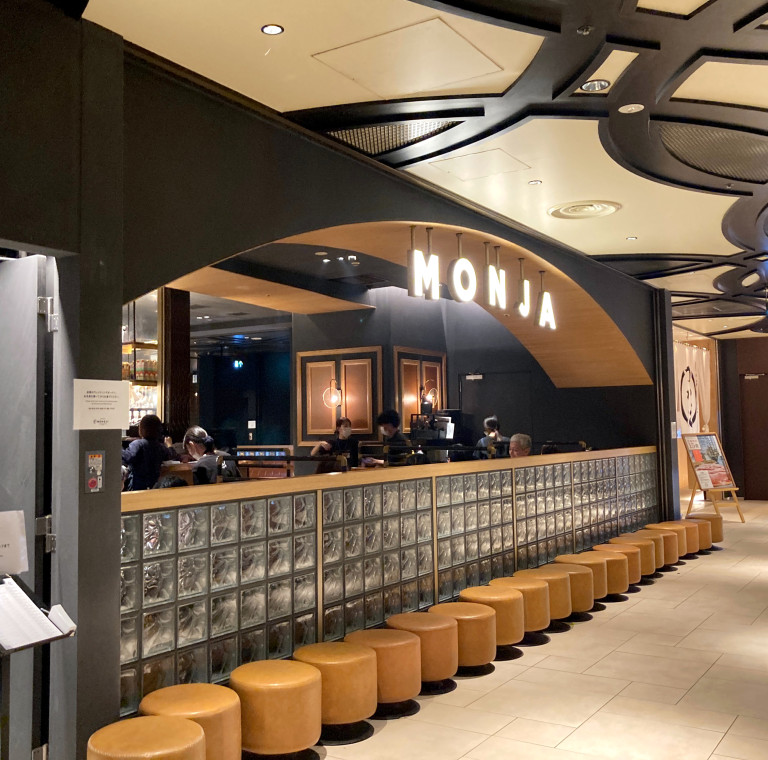
Moheji is actually unique among monjayaki restaurants in that it incorporates French ingredients into its recipes. In fact, the Shibuya Scramble Square branch operates under the theme of “Monja Innovation”, so the menu is entirely original. It’s so popular that there’s usually a line of customers waiting to get in, but Mr. Sato arrived ahead of the opening time and was lucky to get seated quickly.
He was excited to try an amalgamation of French and Japanese food. Surprisingly, the menu also has non-monja European dishes, including seasonal fare like ajillo and carpaccio, neither of which are French. They also serve okonomiyaki and yakisoba, including a limited-time-only oyster okonomiyaki.
The monjayaki menu has two sections, titled “Traditionnel” and “Innovante” (mistyped as “Innvante”). “Traditionnel” includes popular favorites like spicy cod roe and mochi as well as “Fukagawa style,” which includes clams and vegetables. You can also order “Plain Monja” and add whatever toppings you desire.
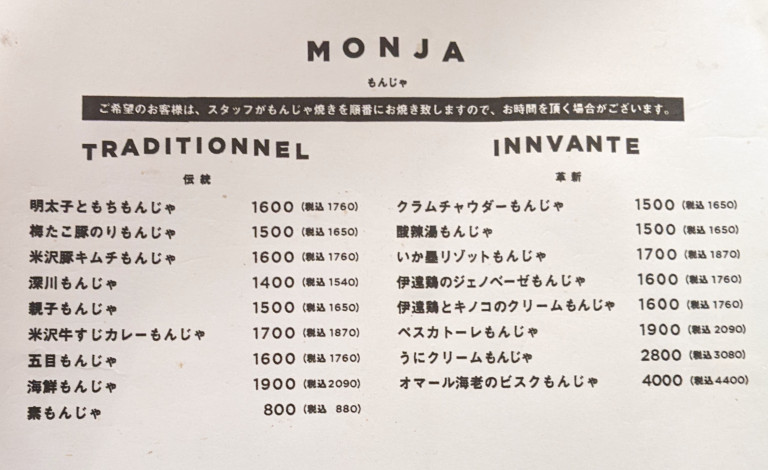
The “Innvante” Monjayaki has interesting options from many different countries, including clam chowder, hot and sour soup, risotto, Genovese, and Pescatore. Clearly, inspiration was taken from not just France but other European countries but even North America and China. Mr. Sato was intensely curious about how such very different dishes would mesh with Japanese cooking. After some deliberation, he decided to throw caution to the wind and ordered the most expensive item on the menu, the Lobster Bisque Monja (4,400 yen [US$31]).
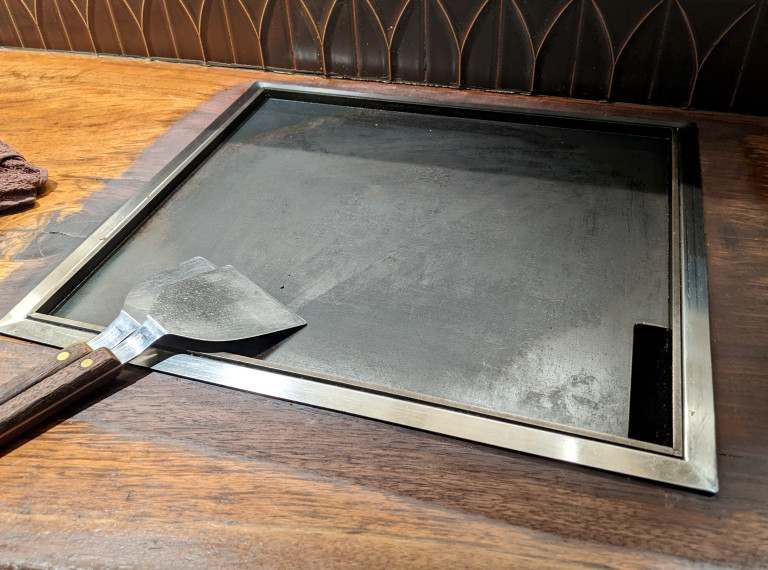
Each table at the restaurant has its own hot griddle, which is where the monja is cooked. The one at Mr. Sato’s table was already hot when he sat down, which meant he’d be able to start cooking immediately. That was good because the Lobster Bisque Monja arrived in moments. It looked like a lot of food, so Mr. Sato wondered if it was actually meant to be shared.
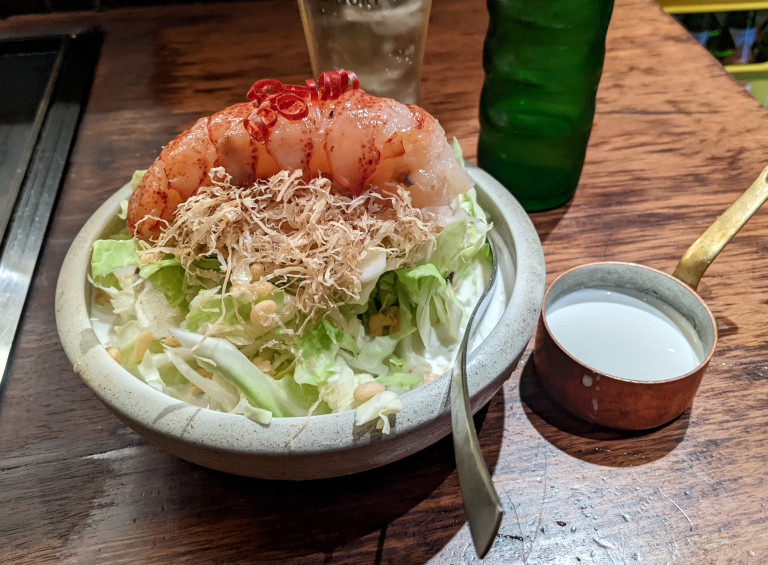
The lobster looked so delicious that he was tempted to pluck it out, grill it up, and eat it all by itself, but he was here to eat monja, so that’s what he was gonna do.
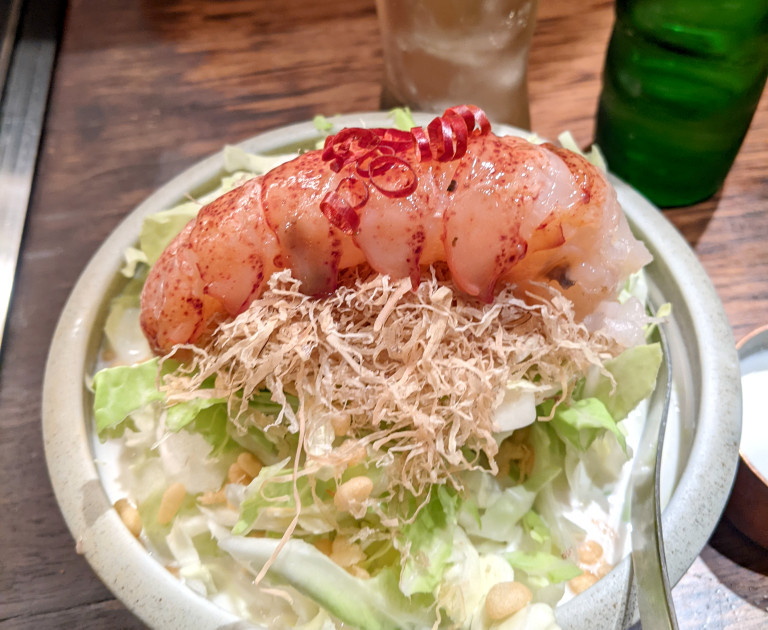
The only problem was that he didn’t really know how to cook monja. What he did know, which he’d learned from a TV show, is that you have to make a little valley on the griddle with the ingredients, then pour the batter in the middle. After that, he had no idea what to do.
Luckily, the staff at this restaurant cook the monja for you. Monja is a little complicated to cook when you’re a first-timer, so having someone with a skilled hand do it for you is a definite bonus. In no time, it was ready to eat!
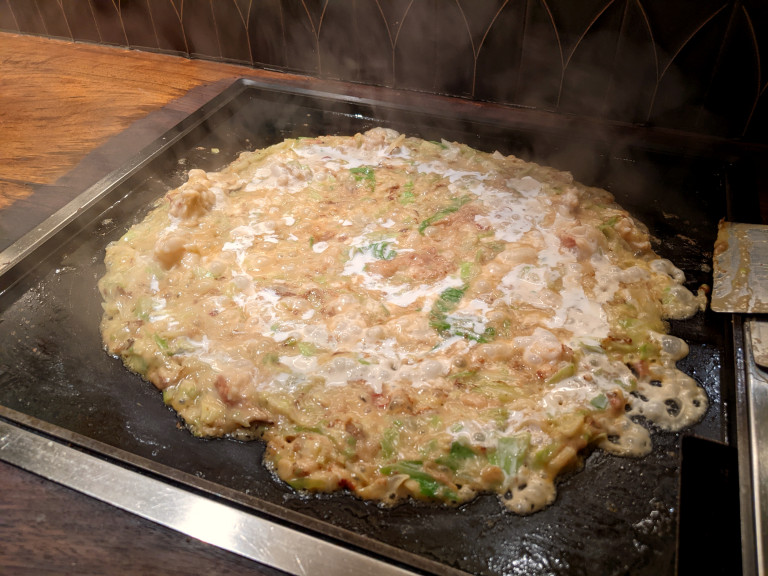
Mr. Sato was grateful that they did it for him, but…what happened to the lobster?! It disappeared somewhere in the Sea of Monja. Well, it had to be in there somewhere. “Don’t worry, lobster! I’m coming to save you with my tiny spatula!”
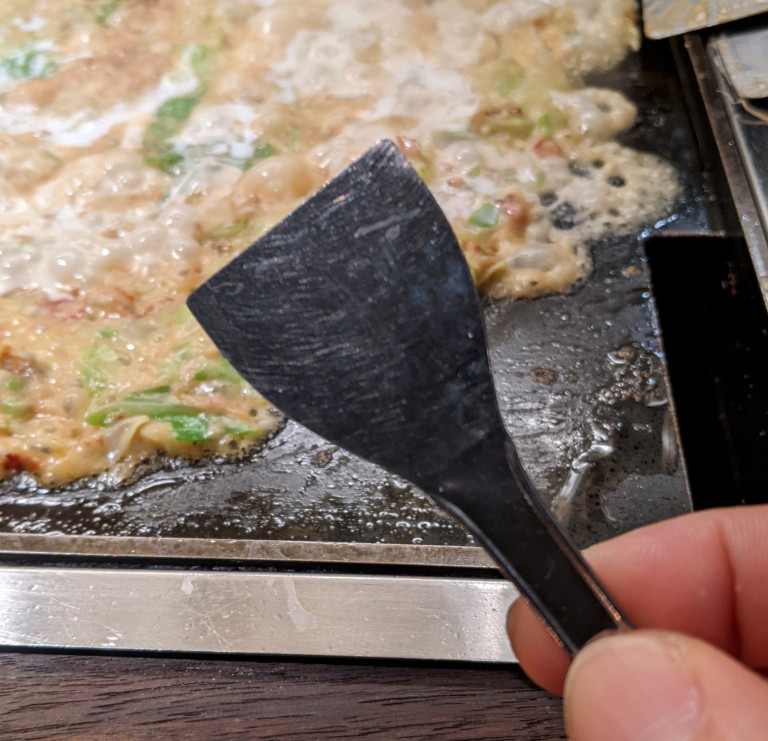
Speaking of the spatula, as Mr. Sato’s eyes were drawn to the glint on the minuscule utensil, he felt a little strange using such an itty-bitty device to eat such an expansive dish. This is, though, the traditional utensil used for eating monjayaki. It seemed awfully inefficient, though. Won’t the food burn while it’s waiting to be eaten on the hotplate? And since they’re made of metal, don’t the spatulas get hot?
But after a moment of hesitation, Mr. Sato said, “Whatever! When in Rome!” and dove in with his tiny spatula, scraping up morsels of delicious food bit by bit.
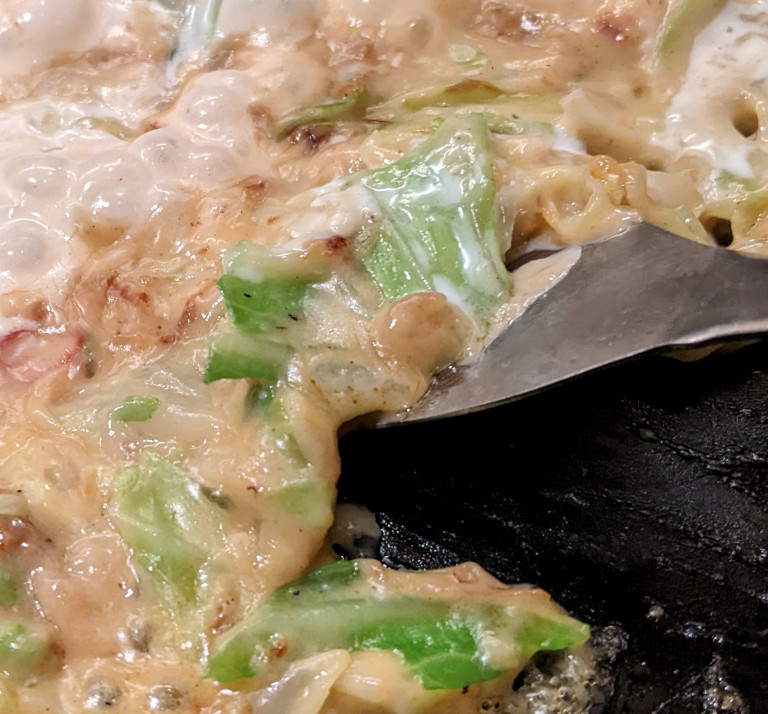
It was really good! Even though it’s a similar flour-based dish to okonomiyaki, it was entirely different. Just changing the ratio of liquid to flour altered the texture completely.
Oddly, it was a bit like eating hot cream. Since the base of this particular monjayaki was made with bisque soup, it had a very strong aroma of lobster, which also meant the experience was like eating hot cream with a hint of shellfish flavors. And don’t worry! Mr. Sato did find the lobster, which he rescued straight into his mouth and then learned was absolutely delicious.
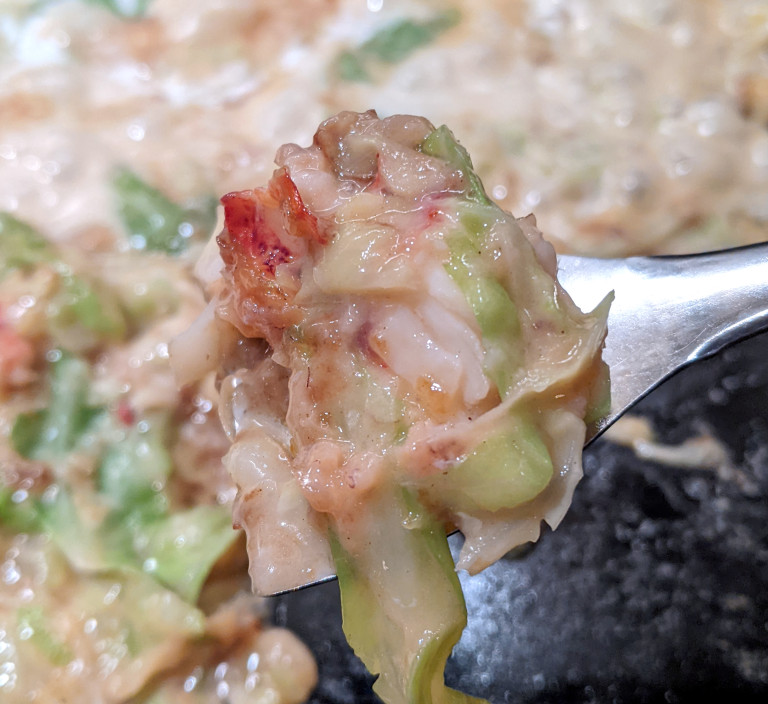
Mr. Sato had thought it would be too much food for one person, but he ate it all before he even realized it. In fact, he felt sad that it was already gone, and was already thinking about what he’d order next time. In other words, he’d completely fallen into the monja trap.
He had to admit that the experience of eating monjayaki is pretty entertaining in itself, and he could see the appeal of a fresh, unique experience for tourists from other parts of Japan as well as other countries. Plus, it seemed like it would be a lot of fun to come with family or friends, order a few different flavors, and share them.

Moheji’s innovative flavors added an even more interesting flair since monjayaki is a food with a long history in Tokyo. Mr. Sato thought the restaurant’s original menu was amazing, and could understand why they would often have lines out the door.
Whether you’re already a monjayaki fan or haven’t yet had a chance to try it, Mr. Sato highly recommends Moheji’s all-new monja flavors. And if you are a monjayaki fan, did you know you can eat it at home after getting it from a frozen monjayaki vending machine? Better stock up so you’ll always have it when you want it!
Restaurant information
Moheji Shibuya Scramble Square / もへじ 渋谷スクランブルスクエア
Tokyo-to, Shibuya-ku, Shibuya 2-24-12 12th floor
東京都渋谷区渋谷2丁目24-12 12階
Open 11 a.m.-11 p.m. (last order 10 p.m.)
Website
Photos © SoraNews24
● Want to hear about SoraNews24’s latest articles as soon as they’re published? Follow us on Facebook and Twitter!
Credit:

0 comments:
Post a Comment